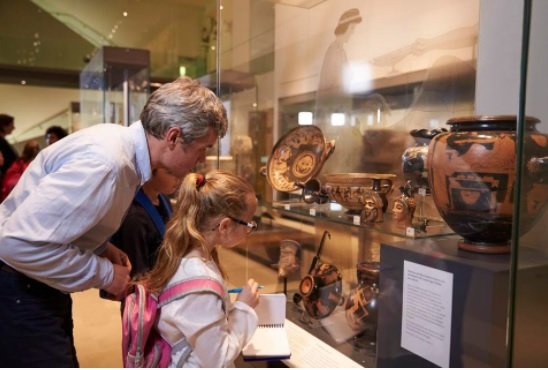The Next Stage In The Digital Transformation Of Museums

Written by Gil Press, and originally published by Forbes, 6 December 2021.
Don’t you wish your local museum would move into the 21st century and provide you and your family with a fun learning adventure that is personalized to your specific interests?
While the internet and our physical world are migrating to the Metaverse, museums are stuck in the Web of twenty years ago. Around the turn of the millennium there was burst of significant investment in digitizing cultural assets and a lot of excitement about “digital curation.” The world’s cultural heritage was brought to our computer screens, with museums, libraries and other institutions vastly broadening their audiences by putting online not only what was on display in their limited physical space but also the many hidden treasures in their storehouses.
The Covid pandemic has reinforced the notion that online access and the virtual world can contribute greatly to the enrichment of our lives. But now that museums are again admitting visitors, will they freeze their digital investments or will they move into the next stage of their digital transformation? And if they elect to move forward, what will the new stage look like?
To understand better how museums could use today’s technology to engage and expand their audiences, I talked to Israeli entrepreneur Shani Ziv, founder of startup Wandering and developer of a web-based platform for experiential learning with mobile devices, and with Talila Yehiel, an art education specialist who has brought this technology to workshops in Europe and the Americas.
“Today, all visitors to a museum get the same experience. It’s like TV in the 1980s,” says Ziv. “What if you come to a museum and select one item of interest to you and then you get to interact with all the other relevant items in the museum?”
The Wandering platform has two layers, one consists of a database containing a few or all items in a collection and the other allows users—curators or visitors—to select items and tell a story about them. It was initially designed to encourage students to leave the four walls of their classroom and “wander” around, exploring new information and interacting with their surroundings and with each other.
A wide variety of applications can be supported by this web-based platform. Muse.run is one such application, providing experiential learning opportunities to museum visitors through interactive maps and digital games. It can scale from a few objects in a temporary exhibition to the entire permanent collection, and from one user to 5,000 simultaneous players. It works with all browsers on all mobile devices.
Muse.run provides museum curators with new possibilities for designing engaging experiences for existing and new audiences, and attract people that want to experience together a new type of a visit to a museum, from families to school groups to corporate teams. And it also creates a new dimension to the work of museum curators. As Yehiel says, “the curators are never visible, regardless of the fact that they have created the experience,” and Muse.run allows them to interact directly with the visitors.
The most recent workshop Yehiel and Ziv ran took place at the Kunsthistorisches Museum in Vienna, Austria. The museum took an existing paper-based guide and transformed it into a digital experience. Each room was represented in the app as a scene with a specific theme, consisting of one or more stations that progress from the point of arrival to an interactive mission to additional information on a specific object or the theme. Users can take photos and create their own visual map of their museum adventure. The target group for this app, says the museum, “is very broad, ranging from school children to adults, catering for whoever is interested in exploring the Antiquities Collection in a different, playful way.”
Starting with small, focused projects, just like the Kunsthistorisches Museum, more and more museums are going to find out how today’s technology can provide the means to expand their reach, going beyond online access to engaging audiences right in the museum’s physical space. It’s the “back to the future” scenario for museums, back to their own four walls with new kind of experiences based on the technological approach (smart phones, apps, visualization, interactivity, gamification) their visitors are very familiar with from other settings.
They are also going to discover that the essence of digital transformation is not digital, it’s transformation. Already thirty years ago, the guidance “don’t automate, obliterate” meant that successful digital transformation required re-designing, re-thinking, re-creating how the organization works instead of just forcing technology on existing processes and traditional ways of doing things.
Similarly, digitizing cultural assets, while a necessary first step, must be followed with a new approach to curating the museum experience.
The hardware and software innovations of the last fifteen years—and apps such as Muse.run that take advantage of them—have already brought “mass customization” to many aspects of our lives. They transform traditional “mass market” approaches—fixed, rigid, one-size-fits-all products and services—into customized and personalized, highly targeted but scalable, products and services. As such, they support the development of a new approach to museum-going, providing museum visitors with an engaging, personalized, and sharable learning experience.